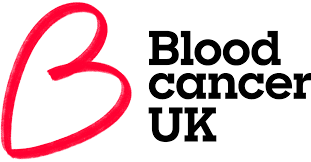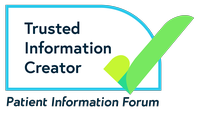What are CAR T-cells?
T cells are a type of white blood cell that form an important part of your immune system. They recognise abnormal cells, such as cancer cells, and destroy them.
T cells destroy abnormal cells using proteins on their surface called receptors. They bind to proteins found on specific cancer cells but not on normal cells. Sometimes, cancer cells can survive by disguising themselves from being recognised by T cells.
T cells become CAR T-cells when scientists change the DNA of T cells to make them produce a new type of receptor, called a Chimeric Antigen Receptor (CAR).
CAR T-cells are more efficient at binding to and removing cancer cells. They also send out signals that attract other immune cells and cause them to rapidly reproduce near the cancer cells. This increases the chance of all the cancer cells being removed.
You can read more about CAR T-cell therapy on our following webpages:
Who can have CAR T-cell therapy?
There is specific eligibility criteria for CAR T-cell therapy. You should discuss with your doctor or clinical nurse specialist (CNS) if you think you are eligible.
CAR T-cell therapy has been approved to treat:
- children and adults with relapsed or refractory B cell acute lymphoblastic leukaemia (ALL)
- adults with B cell lymphoma, specifically:
- relapsed or refractory diffuse large B cell lymphoma (DLBCL)
- relapsed or refractory primary mediastinal large B cell lymphoma (PMBCL)
- relapsed or refractory grade 3B follicular lymphoma (FL)
- relapsed or refractory mantle cell lymphoma (MCL), where previous therapy includes a BTK-inhibitor.
There are lots of other CAR T-cell therapies being tested in clinical trials right now. If the results are positive, these therapies may be available to more patients in the future.
You can have CAR T-cell therapy at a number of hospitals in the UK. You can find a list of these hospitals on the NHS website.
Important:
CAR T-cell therapy is currently only offered if other treatments have been unsuccessful.
Can I join a clinical trial?
Clinical trials are a type of medical research study. They test new treatments in a group of patients before they’re approved for the NHS to use. They’re based in either one or a few hospitals throughout the country and can only accept patients based on the type of blood cancer they have and their treatment history.
You can search for current clinical trials on the Find a clinical trial webpage on the Cancer Research UK website.
Unfortunately, if you don’t meet the medical criteria the trial needs, you won’t be able to take part. Your medical team will be able to talk to you about suitable trials when the time comes.
Will CAR T-cell therapy replace stem cell transplants?
For some patients, it's possible that CAR T-cell therapy may become an alternative to stem cell transplants in the future.
Other patients are likely to only be offered the treatment if their transplant is unsuccessful, or in addition to their transplant. Some may also go on to have a stem cell transplant if their CAR-T treatment is unsuccessful.
CAR T-cell therapy can be a potentially lifesaving option for people who haven't responded to other treatment, but it can be a tough journey both physically and psychologically, for all affected. Anthony Nolan is here to support you every step of the way, so please get in touch if we can help.
Emily John, Anthony Nolan Cellular Therapy Clinical Nurse Specialist (CNS)

This information was developed in partnership with Blood Cancer UK. It is also available as a booklet, to download or order.
Blood Cancer UK has additional resources for anyone who is having CAR T-cell therapy, your family and your carers:
